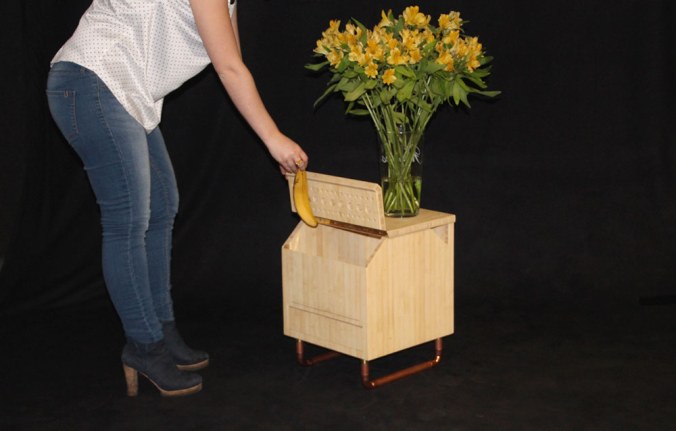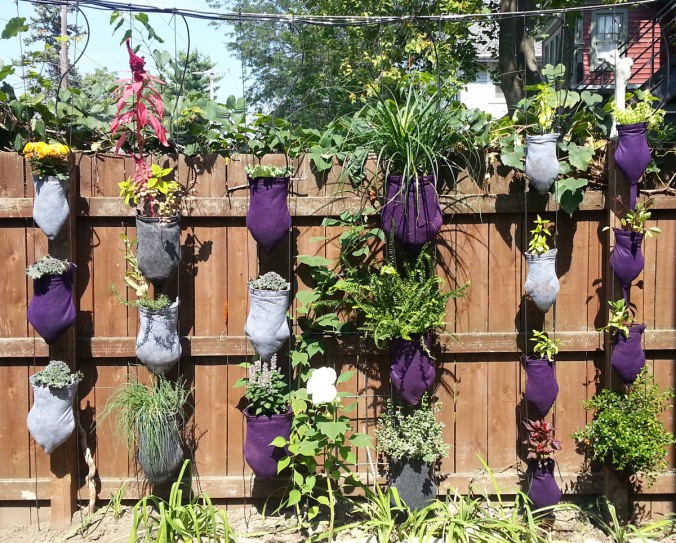 This new vermicomposting product fascinates me. I am so hopeful to see a product like this. I have no connection to the Bionicraft company producing it, but as an artist who has created artworks that also function as domestic worm composting ecosystems for over 10 years, I offer my critique. There are many positive things to say about it …and 2 big concerns.
This new vermicomposting product fascinates me. I am so hopeful to see a product like this. I have no connection to the Bionicraft company producing it, but as an artist who has created artworks that also function as domestic worm composting ecosystems for over 10 years, I offer my critique. There are many positive things to say about it …and 2 big concerns.
Starting with the positive:
- The fact that this product exists (at least as a funded Kickstarter) tells me the world is moving in the right direction. We are finally ready to co-habitate with worms!
- The company has done an excellent job with framing the problems of food waste and presenting their product as a solution. Their advertising copy aligns with the spirit of this WormCulture blog: “…it brings nature into your urban home and redefines your waste by turning it into nutrients that feeds new life!”
- Putting this ecosystem on your kitchen countertop makes perfect sense. This is where food waste happens and the home is the ideal temperature for worm ecosystems.
- They are right in saying that there are no foul odors. From maintaining various experimental indoor worm bins over 10 years, I can attest to this.
- The product appears to have a workable solution for separating the finished compost – the removable lid at the bottom.
- The algorithmic design that has contributed to the odd shape of this product is mysterious. I’m going to guess that it has to do with creating the largest surface area, which helps aerate the system, at the lowest cost of manufacture and shipping. The inner structure identified as a regulator hole intrigues me. Is it for extra aeration?
The issues:
- The portal for food waste is too small. It will only accept a tiny handful of waste and if the waste is concentrated in that one area, it will cause anaerobic bacteria to build up and the worms will avoid that stink. In actuality, you would need to open the entire wood lid to spread the food out to take advantage of the surface area that worms need to feed in an healthy aerobic zone. Worms want to be fed a layer of food that is no more than one inch thick. Check the worm compost quickstart guide.
- It is made of plastic. Making new plastic products does not show concern for the ecosystem. What makes this design nice is that it looks like a ceramic vessel. That would have been an excellent material choice. The wood top is sweet, but questionable, since worms will eventually eat it, unless it has waterproof paint on it, which again makes me ask, why not use ceramics? Or stainless steel?
Ultimately, this is a good start for a saleable, indoor worm composting product. Though it is clearly in the beta stage, it is on a good track. Its very existence frames the problem nicely and helps educate humans about the benefits of living with ecosystems. I look forward to future iterations that go further into solving the design problems of evenly distributing food waste – and the problem of using plastics.
And even if Bionicraft does not pursue the quest to solve these design problems, surely there will be other eco creatives and green business people who will. Looks like the time is ripe for designing kitchen worm composters.

This is my diy kitchen counter worm composter called the Worm Cozy. It is based on traditional upward migration systems usually made of plastic. This one is made of thrift store stainless-steel cookpots and colanders with fabric trimming.
Copy it, or better yet, improve upon it and send me a photo. I am always looking for creative worm projects to feature in this WormCulture blog.
 Living and working in style – with composting worms. Dutch designer Claire Hornn has just concluded a four-month-long pilot project where her hand-made, bamboo worm bins were placed in six companies in Amsterdam for evaluation.
Living and working in style – with composting worms. Dutch designer Claire Hornn has just concluded a four-month-long pilot project where her hand-made, bamboo worm bins were placed in six companies in Amsterdam for evaluation.  She discovered in her pilot program that users were asking for outdoor versions, but she points out that the composting process is more efficient at indoor temperatures. Claire describes her design motivations this way: “Vermicomposting is a great way to be more aware of your food waste and to green your home. It’s odourless and ideal for inside use. But where are the good-looking, functional designs for indoor composting? This question was the start of the Urbeen. The Urbeen is an indoor, design and multifunctional vermi-compostbin. It’s made out of CO2-neutral bamboo and can be used a compost-bin, a stool or little table. It fits easily small apartment and is therefore interesting for city-people who don’t have a garden or balcony.” Her most current designs will soon be available for sale online. Stay tuned by following her
She discovered in her pilot program that users were asking for outdoor versions, but she points out that the composting process is more efficient at indoor temperatures. Claire describes her design motivations this way: “Vermicomposting is a great way to be more aware of your food waste and to green your home. It’s odourless and ideal for inside use. But where are the good-looking, functional designs for indoor composting? This question was the start of the Urbeen. The Urbeen is an indoor, design and multifunctional vermi-compostbin. It’s made out of CO2-neutral bamboo and can be used a compost-bin, a stool or little table. It fits easily small apartment and is therefore interesting for city-people who don’t have a garden or balcony.” Her most current designs will soon be available for sale online. Stay tuned by following her 


